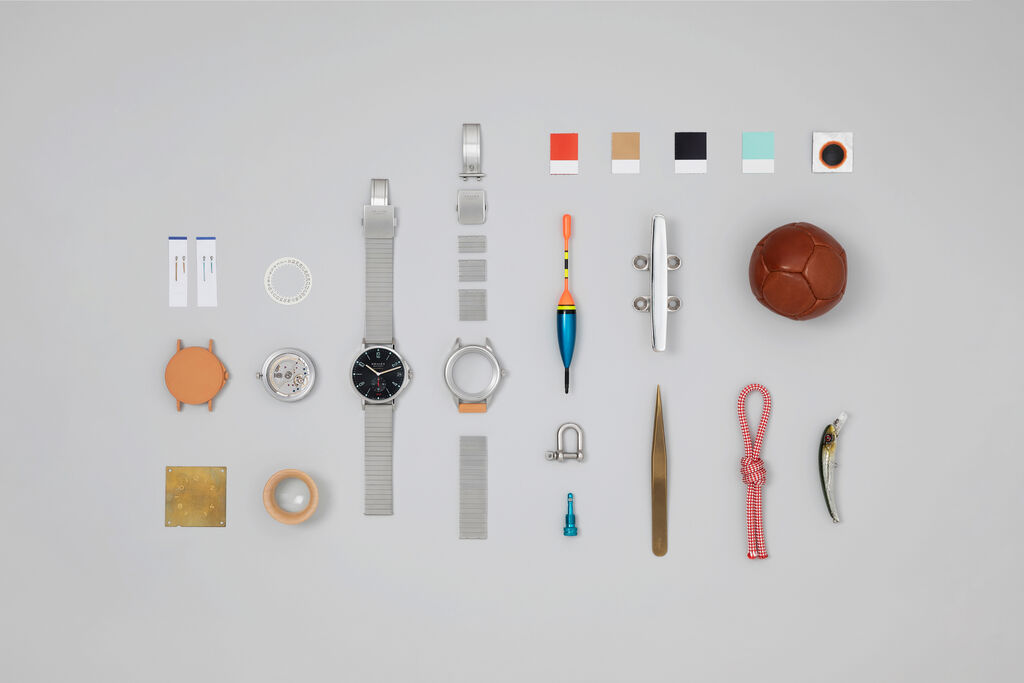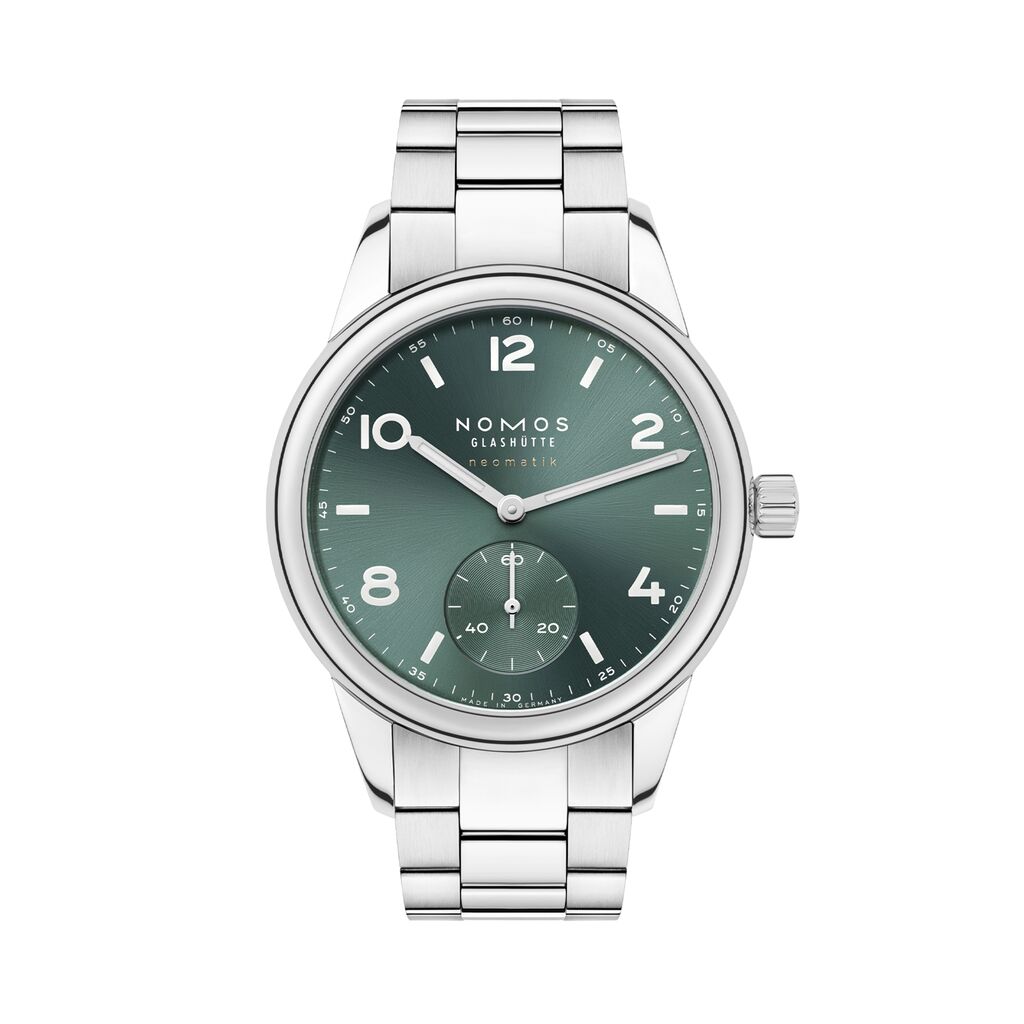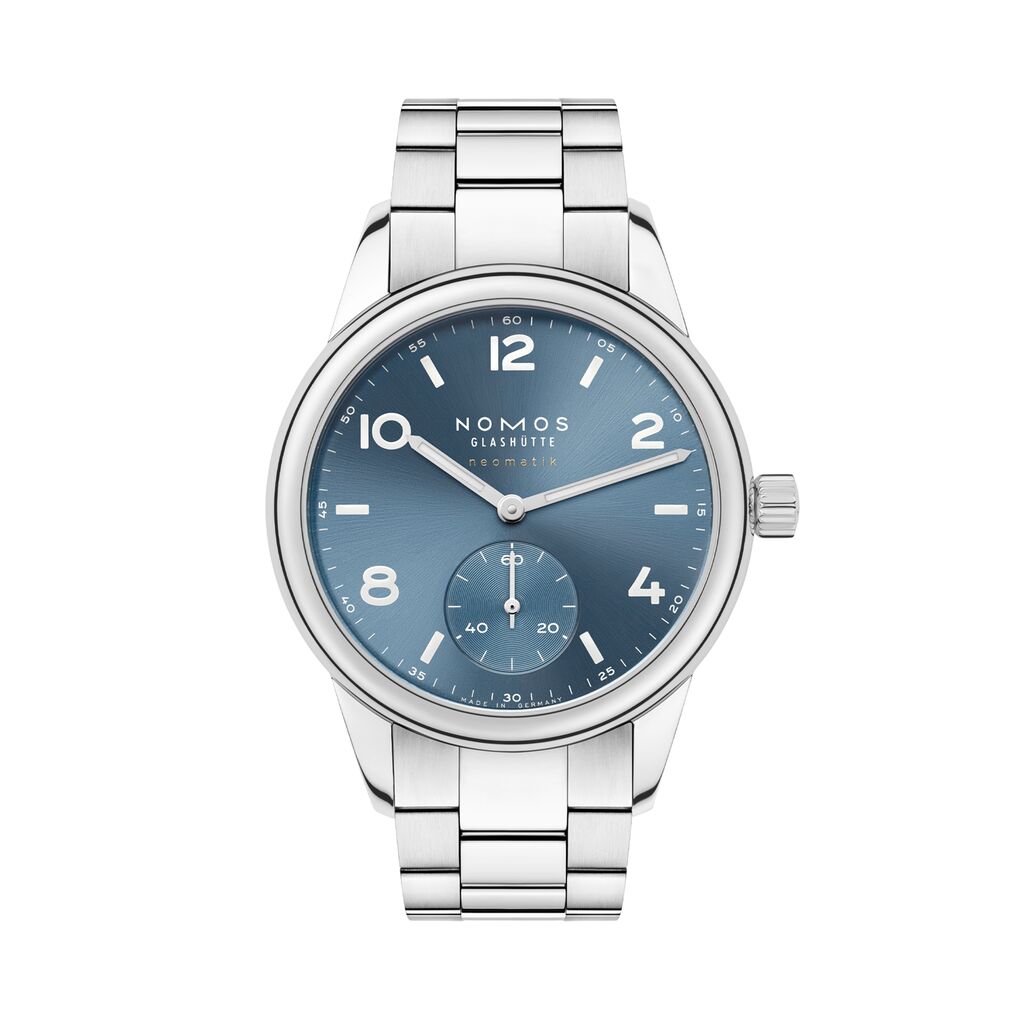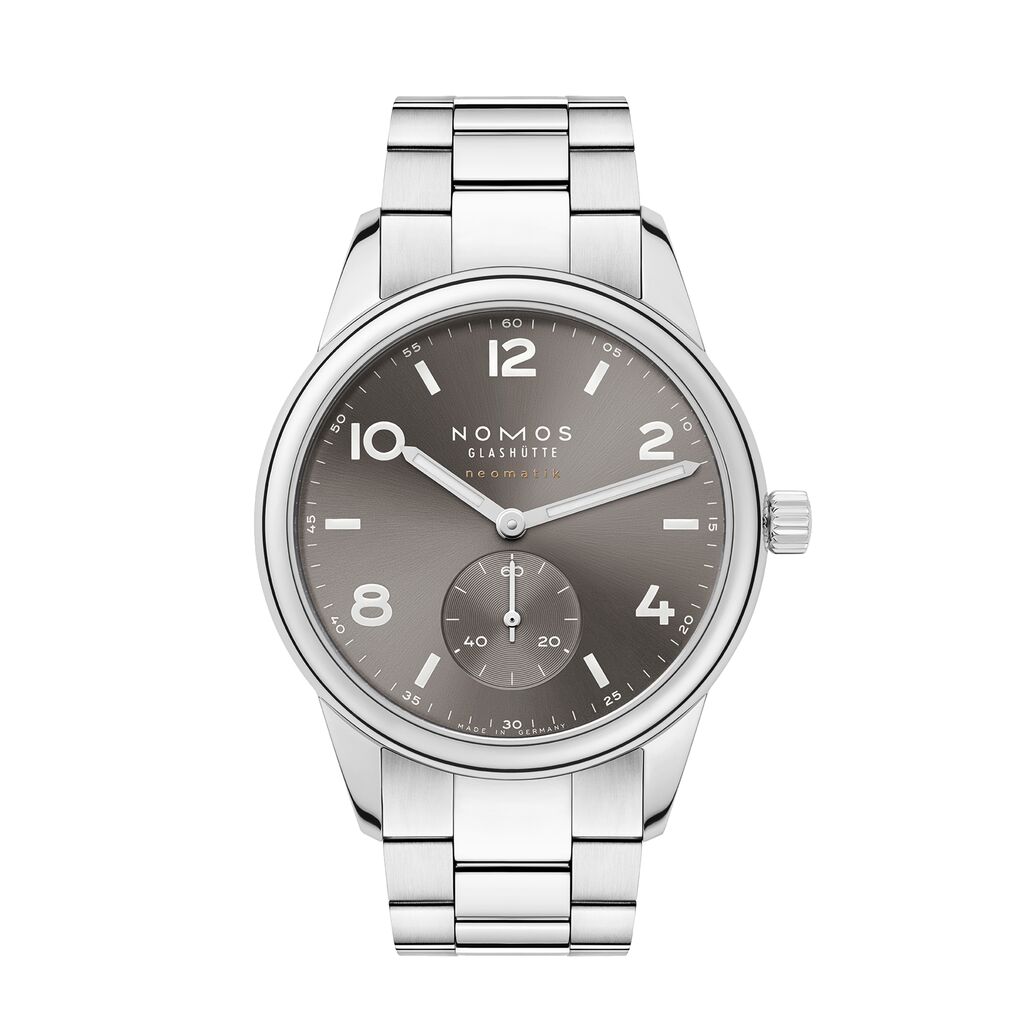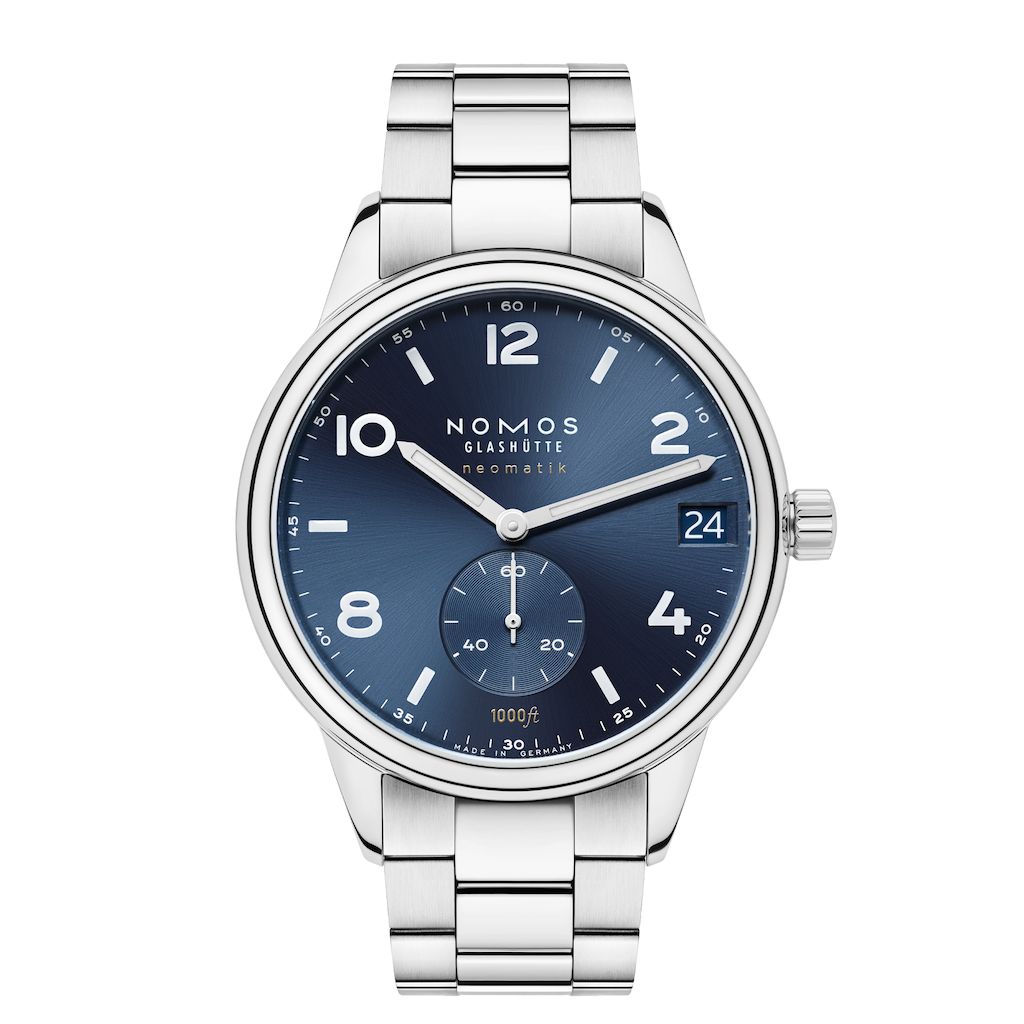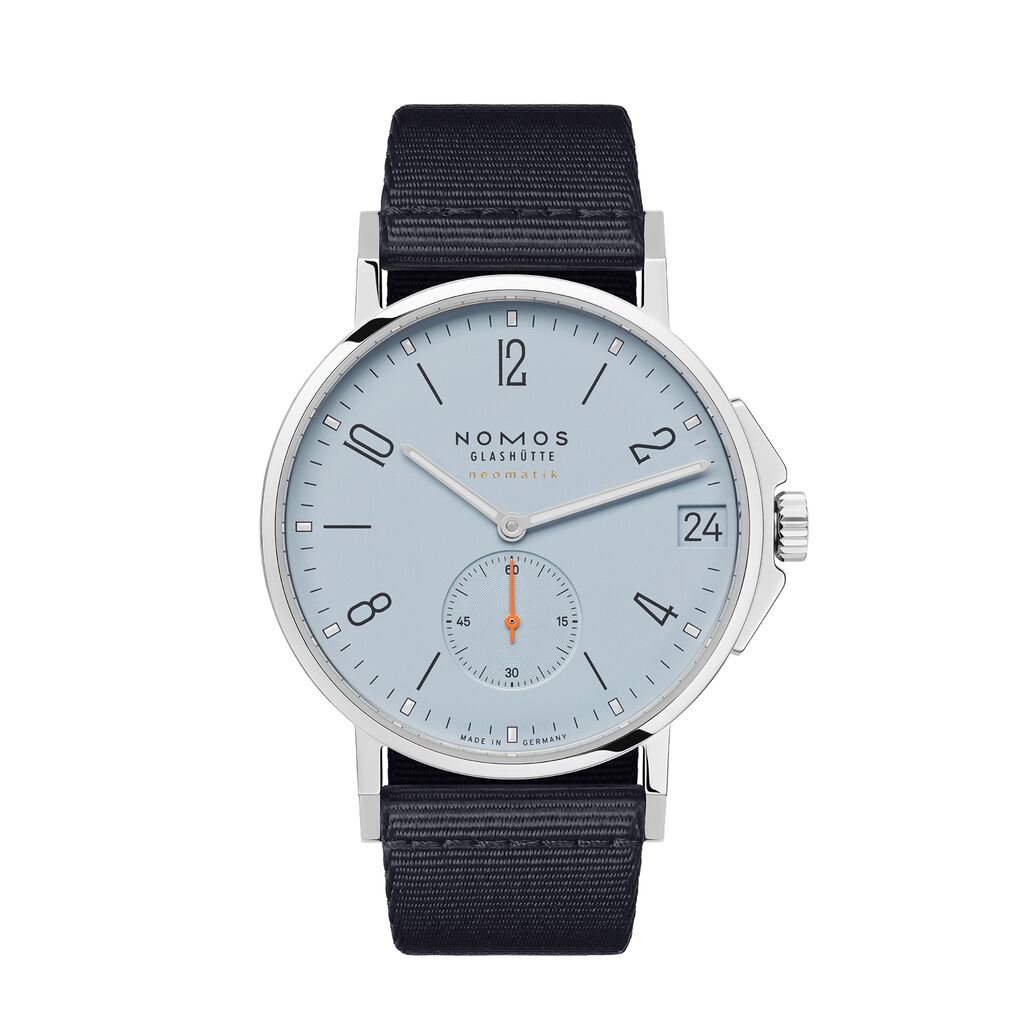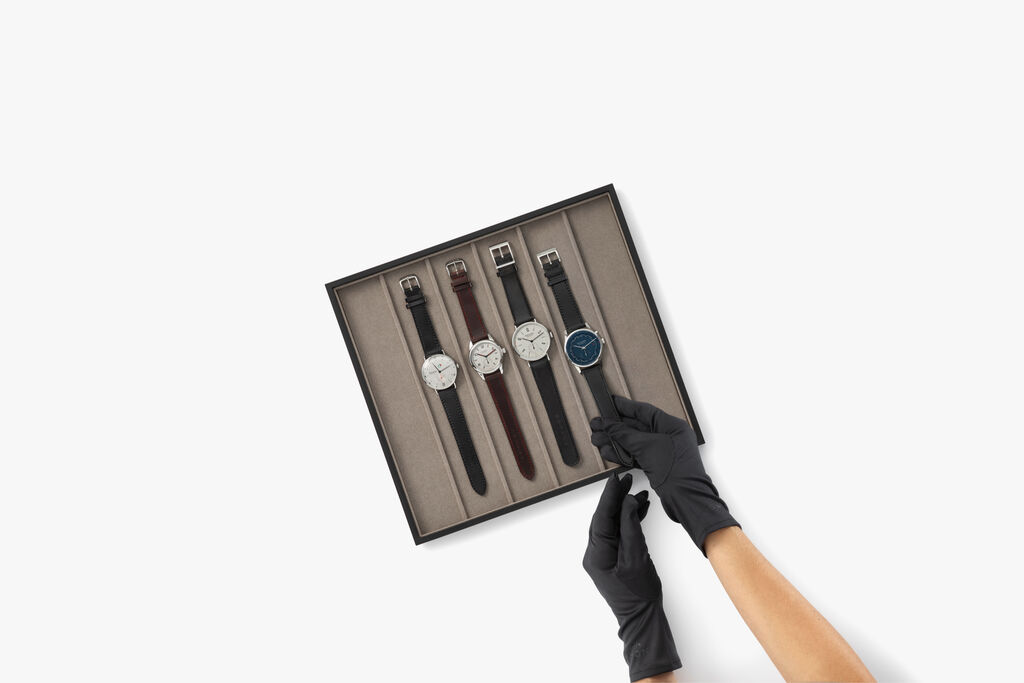A brief history of tool watches
Ultra precise timekeeping matters beyond the bounds of modern professional sports. As early as the 1880s, precise marine chronometers were used on merchant vessels and research expeditions. At the beginning of the 20th century, watchmakers supplied chronometers to the shipping and aerospace industries to enable exact timekeeping and navigation on ships and airplanes—later drawing on their experience in manufacturing for aeronautics and the navy to make their dive and pilot watch collections. Illustrative of this is how the pilot’s watch was developed. During the First World War, it was still a pocket watch in a leather case, attached to the wrist or else affixed to the cockpit. Later, they were attached to the forearm, over the uniform. In 1927, Charles A. Lindbergh was the first pilot to cross the Atlantic on a solo flight. He used the plane’s airspeed gauge, a compass and a wristwatch to ascertain his position, but was not satisfied with this method of navigating. Lindbergh commissioned development of a watch with a bidirectional bezel showing the hour angle of Greenwich, a critical element in determining longitude.
What is a tool watch?
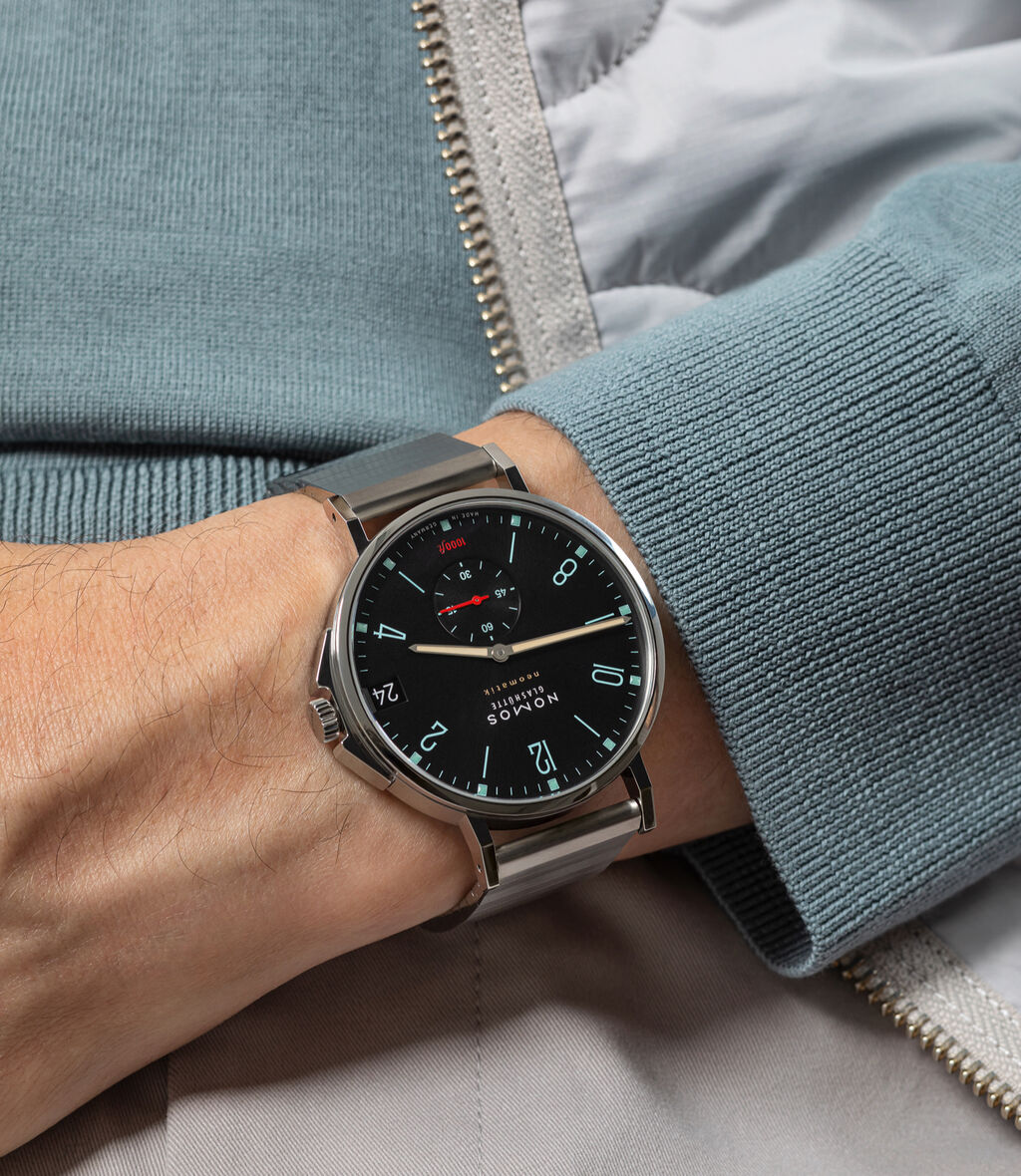
Tool watches are large and striking: they have robust cases, broad bezels, high-contrast luminous dials, and are highly water-resistant. Most tool watches—both for men and women—come with an automatic caliber. Tool watches are differentiated from sport watches—a type of watch with additional electronic features for monitoring sleep quality, heart rate and pulse.
How do tool watches and dress watches differ?
Generally, tool watches will be larger in diameter, and the dials will be more colorful than conventional dress watches. In addition to the movement’s accuracy, water-resistance, robustness and readability are among the key characteristics of a tool watch. Technological developments have seen tool watches grow in variety. Wristwatches that use electronic extras to monitor sleep quality, heart rate and pulse, or count steps now also fall into that category. However, in this article we will be looking exclusively at mechanical tool watches. The recommended features of your tool watch will depend on the demands of your particular sport and lifestyle.
At NOMOS Glashütte you will find highly precise sportive watches. Our tool watches come in diameters ranging from 36.5 to 42 millimeters and are waterproof from 10 to 30 bar.
The best sporty watches for men and women from NOMOS Glashütte
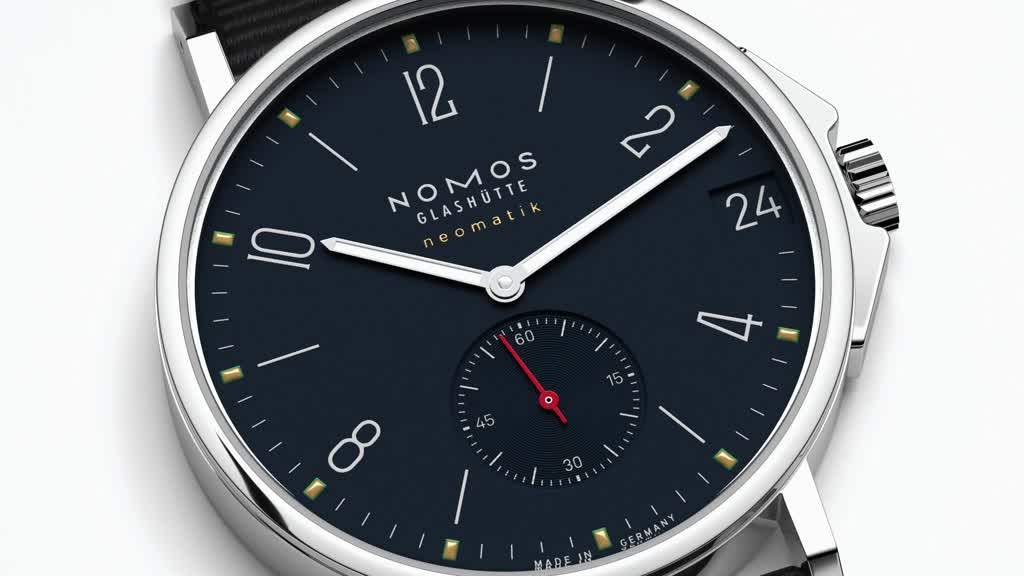
What is a chronograph?
Chronographs are also considered tool watches. These are wristwatches with a stopwatch function. One or two buttons on the case serve to start, stop and reset a hand. Unlike stopwatches, a chronograph displays the stopped time in small sub-dials—also known as totalizers. The flyback chronograph is a step beyond chronographs and shortens timing. Its second button instantly resets the hand to zero. Some chronographs also come with an altimeter or a compass.
How do chronographs and chronometers differ?
A chronograph is a wristwatch with a stopwatch function. Chronometers are those precisely calibrated watches that have been certified as a chronometer following a 15-day test. The test is carried out by an accredited institute, which tests the watches for accuracy in five different positions and at a range of temperatures. Criteria for accuracy vary depending on the size of the movement: small calibers are permitted a larger daily rate deviation than bigger movements. The tolerances are defined in the international ISO 3159 standard, which corresponds to the Swiss NIHS 95-11 and the German DIN 8319 standards.
What is a dive watch?
High water-resistance is just one of many criteria a dive watch must fulfill. When diving, correctly measuring and timing the amount of time spent below water is essential for survival, because this is the only way to determine how much oxygen reserves remain in the tank. For this reason, watches that are sold as certified dive watches must comply with the German dive watch standard DIN 8306, which corresponds to the international ISO 6425 standard.
What are the five most important features of a dive watch?
Unidirectional bezel
Dive watch bezels have a dive time scale and a luminescent dot at zero minutes. Before diving, the zero marker is set to the minute hand—the scale on the bezel indicates how much time has passed. A unidirectional rotation prevents one from staying below for too long: if the dive watch bezel is accidentally knocked or moved, this will only shorten the remaining dive time—it cannot extend it.
Water-resistant to a minimum of 20 atm
Certified dive watches have a minimum water-resistance of 20 atm, corresponding to a depth of 200 meters.
Water resistant-resistant metal bracelet or rubber strap
The bracelet or strap must not exhibit wear from prolonged contact with chlorinated or saline water. Certified dive watches have straps made from durable, easy-to-clean stainless steel or rubber. These materials do not discolor or become brittle in seawater.
Luminous hands and indices
The deeper you dive, the less light will be available to read the dial. It is mandatory that a luminous coating be applied to the hands, numerals and indices of dive watches. To fulfill the DIN 8306 standard, a dive watch must be readable in complete darkness from a distance of 25cm. Superluminova is the pigment watchmakers use most frequently for dive watches.
Screw-down crown
As per DIN 8306, a screw-down crown is a standard feature of dive watches. Screwing it down causes a gasket to press against the case from the inside, thus sealing it.
What is a pilot watch?
Today, pilot watches are no longer essential as navigational instruments in cockpits, but even so, the DIN 8330 standard still stipulates that certified pilot watches must fulfill all criteria that would enable a pilot to navigate without other aids in emergencies. In general, however, nowadays watches which hearken back to the design of the observation and hour angle watches as well as military watches of the 1940s are referred to as pilot watches.
What are the five most important features in a pilot watch’s design?
Matte black dial
Classic pilot watches feature a granulated dial in matte black to prevent distracting reflections.
Easy to read
For easy readability, pilot watches clearly delineate the hour and minute markers.
Triangular zero marker
Military requirements stipulated a triangular zero marker for pilot watches. Some watches added a dot to the left and right of the triangle.
Satin finish
The case must not mirror or reflect light. Which is why the cases of pilot watches were given a satin finish instead of a polish.
Large case
Pilot watches with a large case were worn over the sleeve or buckled around the thigh. Pilot watch diameters ranged from 40 to 55 millimeters, making them easier to read.
Water-resistance

What do atm and bar mean regarding a water-resistant tool watch?
The water-resistance of watches is indicated in atm or bar.
The pressure of 1 atm corresponds to the mean air pressure at sea level. In 1978, Germany and Austria replaced the unit atm with the bar: 1 bar corresponds an air pressure or water column pressure at 10 meters. 1 atm corresponds to 1.01325 bar. The USA introduced bar as a unit in 1982. Most watchmakers, however, continue to employ the historic atm unit to indicate water-resistance. Watches with 10 atm engraved on their case are water-resistant to a depth of 100 meters. This indication refers to a test pressure while the watch is at rest. Movement quickly exposes the watch to considerably higher pressure.
Can I go swimming and diving with any tool watch?
Watches labeled for 10 atm are suitable for swimming or snorkeling. Watches labeled for 20 atm can be worn while diving. This does not mean you can actually dive 200 meters deep with the watch. This indication refers to a test pressure which is applied in a water-resistance test.
Below, we have summarized what each degree of water-resistance allows:
3 and 5 atm = hand washing, splashproof
10 atm = showering, swimming and snorkeling
20 atm and higher = diving
What makes a tool watch water-resistant?
To prevent water from entering the caliber while swimming or diving, water-resistant sporty watches are fitted with plastic or rubber seals along the back of the case, bezel glass and crown. They often even have a screw-down crown with a red warning ring. Crown guards on both sides protect the crown and the delicate winding mechanism against knocks. The back of the case, made from stainless steel or scratch-resistant sapphire crystal, is screwed down watertight.
How long will my tool watch remain water-resistant?
Fluctuations in temperature, sweat, sunscreen and chemicals can strain the sealant. Jumping into cold water affect water-resistance: in addition to the pressure of the impact when hitting the water, sudden cooling generates negative pressure that strains the seals. A mechanical watch should be checked by a specialist retailer or in the manufactory once a year to ensure it is still water-resistant.
How is water-resistance tested?
A specialist retailer or the manufactory can test water-resistance without exposing the watch to water: instead, it is put in a special airtight device and subjected to negative pressure. If a watch is fully water-resistant, the case will expand for a time. If the watch passes the test using air, it will also be resistant to water molecules. You can use the NOMOS retailer search to find specialist retailers near you.
Link to the specialist retailer search
Link to servicing
Robustness
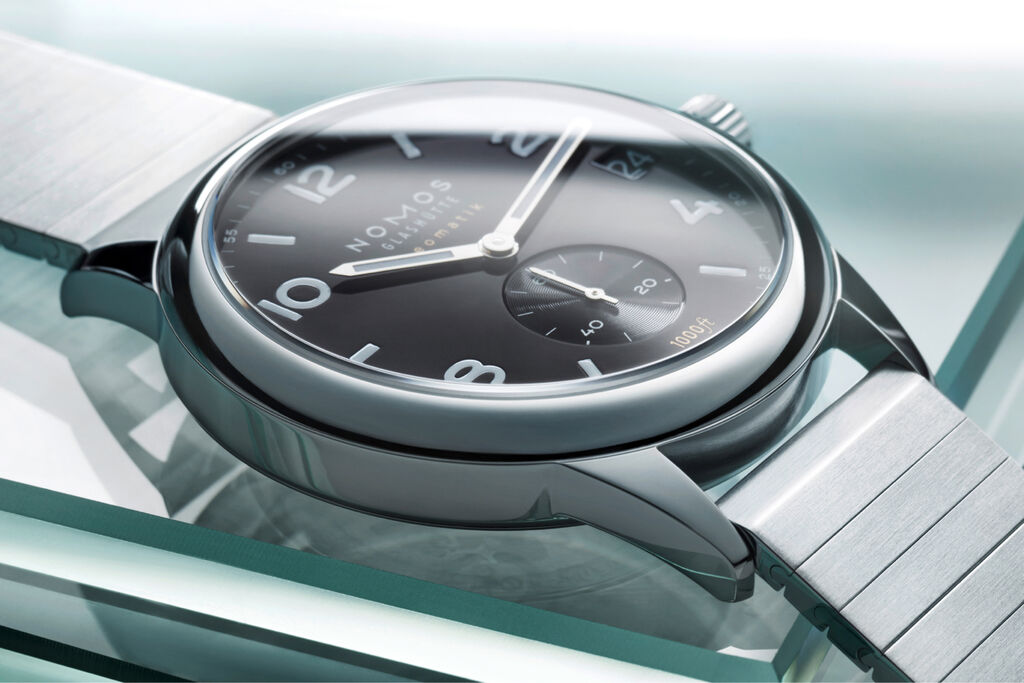
Watchfinder: find the perfect tool watch for you
To wind or not to wind? Find the perfect tool watch online with our watchfinder. Here you can quickly and easily filter our models according to your taste. Size, shape, color - and much more. Click through to your favorite watch.
How is the robustness of tool watches ensured?
The width and composition of the bezel as well as the quality of the materials used for the case, glass front and strap all have considerable impact on the robustness of sporty watches and tool watches for men and women. We have summarized the key features regarding tool watch robustness:
Broad bezel
The bezel encircles, protects and stabilizes the dial. It is broader in sporty watches than in more elegant wristwatches.
Extra-thick sapphire crystal
Sturdy watch glass is essential to a wristwatch’s robustness. The material that watchmakers refer to as sapphire crystal is a synthetic crystal made from molten aluminum oxide. At a Mohs hardness of 9, sapphire crystal glass is the second-hardest transparent material known—only diamond is harder. In addition, sapphire crystal glass is resistant to heat, pressure, stretching and scratching.
316L stainless steel
Stainless steel is a very popular choice for watch cases due to its rust-resistant nature and the variety of surface finishes it allows. NOMOS Glashütte uses the especially robust stainless steel alloy 316L. This material has a low carbon content—the L stands for low carbon—and is easy to process. The addition of 2–2.5% molybdenum provides excellent corrosion resistance in chlorinated water. And its extremely low nickel content makes this stainless steel, which is also called surgical steel, highly hypoallergenic.
Readability
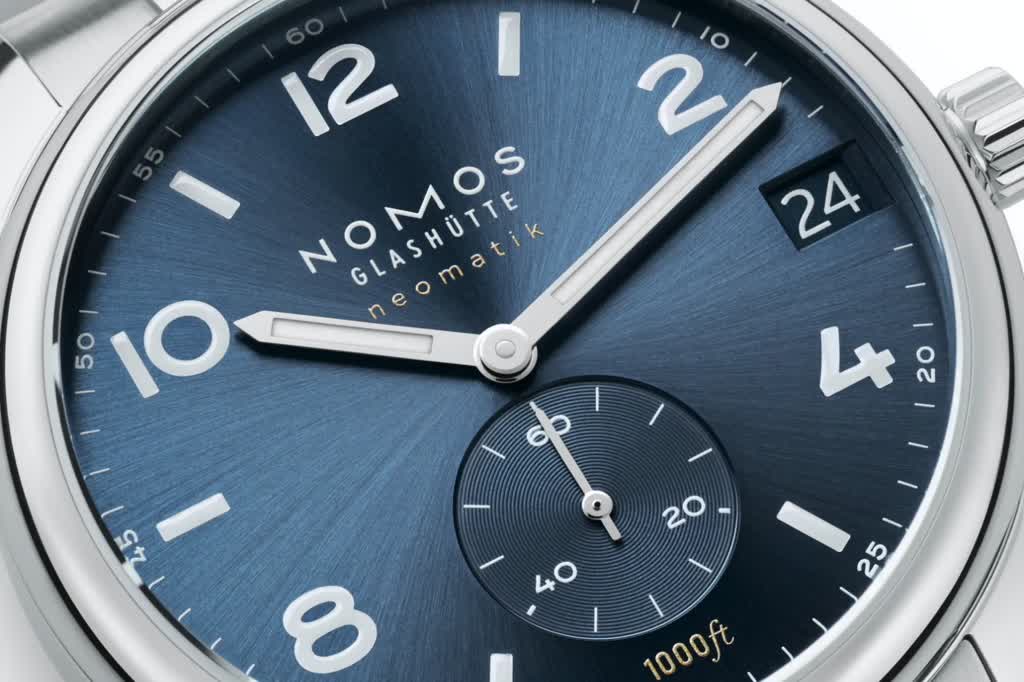
Why is good readability essential for tool watches?
People who love spending time outdoors do not want to be blinded by reflections or distracted by cluttered dials when taking a quick glance at their tool watch. Sapphire crystal glass with anti-reflective coating on both sides, wide numerals and hands, exact minute markers, bold hour markers and a clear color contrast to distinguish between the dial and typography all contribute to make a sporty watch more readable. Hands, numerals and indexes coated with Superluminova glow in the dark and under water, making sporty watches more readable as well.
What is Superluminova?
Superluminova is a luminous paint that significantly improves the readability of watches in low-light conditions. It is applied to the hands and used for the numerals and indices. Unlike the radium-based luminescent material that was used until the 1960s, Superluminova poses absolutely no health risks.
Superluminova consists of a ceramic powder (strontium aluminate), which is added to a rare earth element (europium) as an activator. The substance can be applied to the dial in different shades and also has a range of emission colors. The luminous intensity and afterglow time depend on the concentration of the powder, the amount applied, and the chosen color. The lighter the color, the better the material glows. The length of exposure to daylight is also a key factor in its activation, with a saturation point to meet. The luminous material charges faster in sunlight, while it takes a little longer indoors. And Superluminova has another quality: It can be reactivated countless times. Even after many years, a dial coated with Superluminova still glows just as well as it did on its first day.
How does Superluminova work?
Superluminova luminous pigments are strontium aluminate based, manufactured without using radioactive materials, and are phosphorescent, which means they can store energy and release it as visible light without needing to be heated. Superluminova’s luminous quality is based on the principle of phosphorescence: following exposure to shortwave light, light is emitted over time. And what physics are involved? Activated by light, the atoms begin to oscillate between two energy states. When transitioning from the high to the low state, they emit energy in the form of light. The duration of a tool watch’s afterglow will depend on how long it was exposed to light and how many light-absorbing crystals are present—the more generously Superluminova is applied, the more intense it will glow.
How is Superluminova applied to NOMOS watches?
Superluminova (sold under the brand name Super-LumiNova®) is sent as a powder by the family-owned Swiss company RC Tritec AG to watchmakers and dial manufacturers, where it is then liquified. Several options exist to apply the pigment, depending on how the dial is designed. In NOMOS watches from the Autobahn series, Superluminova is glued on—the concave dial provides sufficient room for the rather thick and highly luminescent blocks of Superluminova. In contrast, pad printing is the best choice for Ahoi Atlantic’s delicate numerals. The dials of the Club Sport series have room for plenty of Superluminova. An applicator is used to fill the luminous pigment in the engraved numerals. Club Sport neomatik 42 date blue is the NOMOS watch with the brightest afterglow in the current collection.
